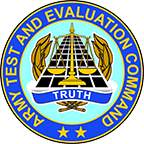- Homepage >
- Instrumentation >
- Test Talk
Test Talk
Test Talk Overview
Test Talk is an interactive test event management and control tool. Distributed test event or simulation conductors use this set of tools for managing time, human driven events, and data entry. The tools offer a synchronized environment, paperless test procedures, shared operator and conductor comments in real time, monitoring of test progress, and collect and report performance, anomaly and survey data. TestTalk provides an interactive means to both electronically distribute and display, time-ordered event lists to be used before, during, and after test events. These event lists are step-by-step 'to do' lists for each operator. As an item on the event list is completed, all participants are sent messages stating the progress of the test. No matter where the test participants are physically located, this system allows each operator to execute their listed events, send messages to each other, and display the messages of other operators to keep all test participants on the same step of the test event and aware of the next action to be executed to maximize coordination during test execution.
The event lists are generated and ordered using TCRS (Test Conduct and Reporting System). Test Talk provides the test conductor master event lists and gives each operator their unique task list for the test event. This allows the synchronization of actions even for large distributed test events involving multiple threads of execution while maintaining active central control. In other words, it keeps everyone coordinated by providing scheduled preset messages per each step of the test. Collecting operator data is also enabled through TestTalk so that it can be processed and reported through the TCRS database.
TestTalk has client-server software architecture, with the TestTalk server hosting the data for any number of widely distributed lightweight clients (Web Browsers). Unlike commercial web-server based technology, TestTalk implements its own custom HTTP server making it very secure from hacking using known exploits in commercial web servers. Because it cannot launch external processes (via computer generated image (CGI) or other mechanisms), the TestTalk server cannot be used to compromise the security of the system, on which it is running. It can only perform a series of dedicated services such as time, event logging, data retrieval and nothing more.
The users can completely customize the content being published to the clients. The content of a TestTalk driven “web service” is driven by structured HTML documents that contain embedded server side includes (SSI) tags which expose the dynamic information content of the TestTalk server within a completely user configurable “look-and-feel”.
Current Capabilities
- Provides clients with a common Time Service with both a Real-Time (Universal Time Clock (UTC)) clock as well as a Test Clock (T-Time) which can be varied and independent of Real-Time.
- Provides role-based event schedule with color-highlighting of upcoming events based upon Time-To-Occurrence.
- Imports Time Ordered Event List (TOEL) data from external systems like TCRS.
- Provides time-tagged (both UTC and Test Time) message logs which provide a “Chat Window” for Clients during the test event.
- Provides general tabular and HTML form-based data entry, allowing the user to create their own dynamic data entry forms which can be used to collect time-tagged data during the course of the test event.
Application Software
TestTalk is a software server than can run on most windows platforms. Clients can use any HTTP 1.0 & HTML 2.x+ compliant web browser to access. The TestTalk server is automatically configured with a default working configuration, but in order to function properly, it requires that the user build/construct the content of their “WebRoot” to match their specific test event requirements.
The system ships with both, a tutorial WebRoot installed and a full sample WebRoot from the Synthetic Environments Integration Testbed Distributed Test Event 4 (SEIT DTE4) exercise which can be modified to act as a kind of “bootstrap” for their WebRoot.


